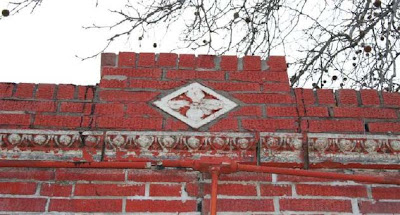I love how the Post-Dispatch is forcing the conversation on St. Louisans: can we compete in a changing economy, with a lot of the metrics stacked against us?
There is no simple answer to this question. It's an impossibly complicated, messy question with an even more tangled answer. But there are good steps we, as a city and region, could be taking to get to that elusive answer (answers, in reality).
One obvious one to me is: openness. Let's be an open city--a place where ideas big and small are discussed and debated openly, involving all parties.
In my mind, our government and our larger power structure in the city is essentially conservative and concerned with self-preservation. No one in the system wants to surrender power. Remind me why we can't have an open discussion of just how many aldermen we need. Tell me again why we don't have a huge public forum discussing how aldermanic courtesy is hurting our city. Or why we have primaries or political parties at all in an essentially one-party system? Preserving age-old divisions (white vs. black vs. other; North Side vs. South Side vs. Central Corridor; etc.) is the last thing St. Louis needs. Yet few want to take a dip into these murky waters to try to change the status quo.
Few leaders put forth good ideas or any ideas at all. Most of our local government officials still operate under the rubric of damage control. They react to constituent complaints and try to mop up after each one.
We need an open government that involves residents at all turns. We need our elected officials floating ideas about how to improve our city. We need our corporate underwriters to get on board with helping ideas come into fruition.
The ideas don't have to be literally big--like the NorthSide project or China Air Cargo Hub. In fact, as it relates to development, they should probably be small, organic, and incremental. But there should be a constant stream of ideas to improve our city. Let's reexamine our circa 1949 zoning code. Let's look into completely obliterating the "North of Delmar" stigma. Let's all have a discussion about what's right for the Ballpark Village site. And on and on and on and on (crime, schools, etc.).
But we can't have this discussion if we're not all at the table--or if there is no table at which to discuss.
Take a look at what one rapidly improving city has done. Pittsburgh's Public Square Project is all about connecting citizens to their government, opening it up, and demystifying its ways. PopCity Pittsburgh has a great article that sums up the group's goals. While St. Louis is working on similar projects in different capacities (see UrbanSTL, which is uniting urbanist voices into one super-network), there's still no one place that we all come together--whether online or in the physical realm of our large, fragmented region. We need this discussion table more than anything right now--so that a lot of the ideas floating around can gain currency and spread. Most importantly, those at the table should be from all the varied backgrounds St. Louis can offer. While projects like Citygarden are great and improve our city, their public consultation process is limited and doesn't represent the city's denizens as a whole. In large part, St. Louis is either apathetic about its government, doesn't understand it, or doesn't trust it.
Our first step needs to be: open up our government! Part and parcel to this is more regional cooperation and coordination between our many governments. This is all easier typed than done; but that doesn't mean we shouldn't be rebuilding our own "Public Square" and letting the light shine in on our government. That way we can get people involved and motivated to discuss how to move our city and region forward.
(Thanks go to Jeff Vines for forwarding me the Pittsburgh Public Square Project!).
WHY NOT START THE YEAR WITH THE ARCH?
12 hours ago














































